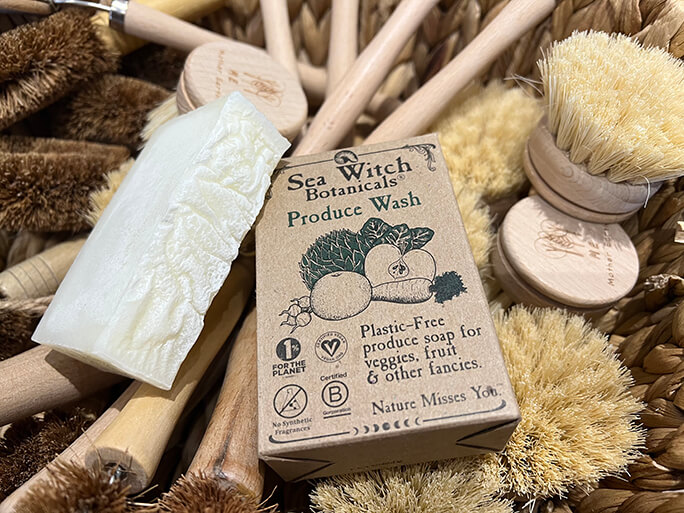Eco-Friendly, Sustainability
Plastic Innovations: Recyclable, Biodegradable and Compostable
The effect of plastics on our environment has become a topic of concern over the past decade, and while we mourn how it is negatively impacting animals, sea life, and our environment, it still begs the question, how do we, as consumers, reduce the use of petroleum-based plastics to better protect our planet?
For over 50 years, The Natural Defense Resource Council (NRDC) has been working to address environmental issues like petroleum-based plastic waste by empowering individuals to make personal changes to better protect the environment. To begin with, here are the NRDC’s suggestions for the top 5 ways to reduce plastics in your daily life.
Top 5 Ways to Reduce the Use of Plastic
- Wean yourself off disposable plastics
Ninety percent of the plastic items in our daily lives are used once and then chucked: grocery bags, plastic wrap, disposable cutlery, straws, coffee-cup lids. Take note of how often you rely on these products and replace them with reusable versions. It only takes a few times of bringing your own bags to the store, silverware to the office, or travel mug to Starbucks before it becomes a habit.
- Stop buying water
Each year, close to 20 billion plastic bottles are tossed in the trash. Carry a reusable bottle in your bag, and you’ll never be caught having to resort to a Poland Spring or Evian again. If you’re nervous about the quality of your local tap water, look for a model with a built-in filter.
- Cook more
Not only is it healthier but making your own meals doesn’t involve takeout containers or doggy bags. For those times when you do order in or eat out, tell the establishment you don’t need any plastic cutlery or, for some serious extra credit, bring your own food-storage containers to restaurants for leftovers.
- Buy in bulk
Single-serving yogurts, travel-size toiletries, tiny packages of nuts—consider the product-to-packaging ratio of items you tend to buy often and select the bigger container instead of buying several smaller ones over time. - Buy recycled
Make sure the products you purchase (and the packaging they come in) are recyclable, and when possible, choose products that contain recycled materials. “If you purchase products that have recycled content, you’re closing the recycling loop and making sure the cycle continues. This will incentivize manufacturers and businesses to use more post-consumer waste and fewer virgin materials.
And speaking of sustainable companies that recycle, let’s have a look at some that are doing the right thing by creating a product from 100% recycled materials. Some are even using plant-based material or a combination of plant-based materials and recycled plastics which further reduce waste, lower carbon emissions, and keep plastic out of our oceans and waterways.
8 Companies with a Mission to be 100% Recycled
The Green Business Bureau has recommended supporting these 8 companies that are making huge strides in an eco-friendly approach by creating products that are not only better for the environment but are fashionable and compelling consumers to go all in.
GREEN TOYS
This innovative California-based company sells children’s toys made from recycled milk jugs. They’ve already recycled more than 55 million milk jugs and counting since the company went into business more than 10 years ago. Safety is a major priority for the company, especially since it sells to parents with young children. Their toys pass domestic and international safety and environmental regulations with flying colors. Committed to sustainable shipping, their boxes are even printed with soy ink, which biodegrades four times faster than petroleum-based inks. Even in a progressive state like California, the company shines as an example of the power of recycling.
ALLBIRDS
Claiming to make the world’s most comfortable shoes, Allbirds is known for making footwear from 100 percent recycled materials, including sheep’s wool, recycled cardboard and plastic, and castor bean oil. But, don’t worry about the sheep! The company works with sustainable farming and animal welfare groups to make sure their livestock are well taken care of, healthy and happy. Compared to a company that sells synthetic shoes, Allbirds uses around 60 percent less energy during the manufacturing process, allowing consumers to feel good about wearing out another pair of shoes.
ROTHY’S
Having recycled more than 12 million water bottles, Rothy’s uses recycled plastic to make fashionable shoes that are designed for women on the go. What looks like knitted fabric from a distance is actually strands of plastic woven together, which helps the customer avoid walking around in wet shoes all day. The plastic also helps the shoe feel flexible, making it the perfect choice for those who are on their feet all day. Unlike synthetic plastic sandals that can get sweaty and feel stiff, the finely knitted plastic allows for a greater range of movement. Not to mention, their packages are sturdy and reusable. Their customers can use them for storage, shipping, or as a recycle bin organizer.
WEWOOD
When someone buys a watch at WeWOOD, the company will plant a tree in their honor. They’ve already planted more than 600,000 trees in collaboration with Trees For The Future, a nonprofit that’s determined to restore the earth’s natural woodlands. Planting trees is also a great way to reduce the amount of carbon dioxide in the earth’s atmosphere. A single tree is capable of absorbing up to 48 pounds of carbon dioxide a year. In addition to increasing the earth’s total tree count, all their watches are made with 100 percent recycled wood and reclaimed wood. Their products are also free of toxic materials that are often used to treat wood.
RECOVER BRANDS
The team behind the clothing company Recover Brands believes in using all kinds of recycled materials to make their products, including everything from cotton swept off the factory floor to the polyester made from recycled plastic barrels and soda bottles. Bill Johnson and John Riddle are avid outdoorsmen who are doing everything they can to preserve the natural environment that they cherish so much. The company has even reduced the amount of dye in its products, completely eliminated plastic packaging, and improved its manufacturing process to reduce its overall energy use. They sell all kinds of clothing for men, women, and children and outdoor gear for hiking, swimming, and camping.
COTOPAXI
Selling all kinds of outdoor gear and clothing, Cotopaxi uses sustainable llama wool and what would be discarded fabric to make their products. They minimize their waste and use as much of the fabric as possible instead of just tossing the scraps on the floor. The company even reserves 2 percent of its total revenue for fighting world poverty. They’re also committed to several causes, including improving healthcare and education in the poorest regions of the world and creating opportunities in economically underdeveloped countries.
LOOPTWORKS
Looptworks sells many different types of bags and accessories made from recycled materials. The company’s name is derived from what’s known as closed-loop manufacturing, which means only using recycled products to create something new during the manufacturing process. Operating out of Portland, Oregon, the company works with those who would otherwise stash their waste in the landfill to gather their manufacturing materials. This significantly reduces the amount of garbage in the region and minimizes carbon emissions. The company is also officially recognized as a B corporation, a special distinction given to certain companies with an aggressive commitment to environmental sustainability.
Biodegradable and Compostable Product Innovations
There are also companies going above and beyond the use of recycled materials. Companies like Pela are using plant-based materials to produce a product like phone cases, sunglasses, and watch straps that are biodegradable. In their own words, Pela Cases are compostable and free of lead, cadmium, BPA, and phthalates. The cases are made of a proprietary blend of biopolymers and Canadian Prairie flax shive. Pela Case is designed to protect your phone and formulated to reduce waste on our planet.
Biodegradable and compostable plastics are not new to the “green” consumer environment, but they are only now really starting to gain traction. That’s the good news. The bad news is that it’s confusing and marketers are relying on that confusion to leverage the word “green” for sales. Pela has the answers to some questions that will clear up the confusion and help you better understand what’s what.
What’s the difference between biodegradable and compostable?
Biodegradable refers to a material breaking down with the help of microorganisms. To be labeled a biodegradable plastic, there is no time limit set on when the product breaks down and these plastics can leave behind toxic residue.
Compostable refers to a material capable of breaking down into carbon dioxide, water, and biomass at the same rate as cellulose. Compostable plastic must also disintegrate and become indistinguishable in the compost and CAN NOT leave any toxic material behind.
Will Compostable plastic biodegrade in a landfill?
The short answer is NO. Throwing a “green” plastic product into a landfill defeats the purpose of creating and consuming biodegradable and compostable plastics in the first place.
Many people think, oh well, it’ll at least break down eventually…but…well actually, no it probably won’t. These special plastics need air, moisture, and sunlight to break down properly and unfortunately, landfills tend to entomb waste and deprive it of these necessary elements.
Do Biodegradable and compostable plastics mix with recyclable plastics?
They do NOT. You’ve already heard the “don’t throw compostable plastic in the garbage” lecture but remember that goes for the blue bin too. This can create a wasteful extra step for the recycling plant to sort out bioplastics from recyclable plastics or contaminate the recycled materials in the process which again, defeats the whole purpose of both environmentally friendly initiatives.
Are biodegradable and bioplastics free of phthalates or bisphenol A (BPA)?
No. Reading the fine print is important. Most people see the word bio and think “natural” and associate it with safe. But safe or non-toxic plastics are determined by further testing to ensure a bioplastic is free of harmful chemicals like lead, cadmium, BPA, and phthalates.
Collaborating with Corporations to Be a Part of the Change
As consumers, we might make a difference through our own decisions and habits, but corporations have a much bigger footprint and bigger impact. So, by supporting companies like Pela which align with our eco-friendly buying habits, we are encouraging design innovation in compostable, biodegradable, and recyclable goods. You might even say we are collaborating with them for the change.
To see browse the eco-friendly products that Kaya Hemp Co. carries, stop in or visit us online.
Resources:
https://www.mission-6.com/post/start-your-sustainable-journey-a-sustainable-phone-case
https://www.nationalgeographic.org/encyclopedia/great-pacific-garbage-patch/
https://www.nrdc.org/stories/10-ways-reduce-plastic-pollution

